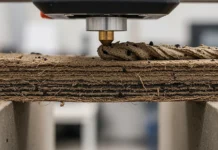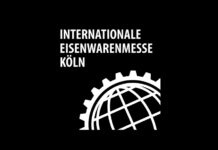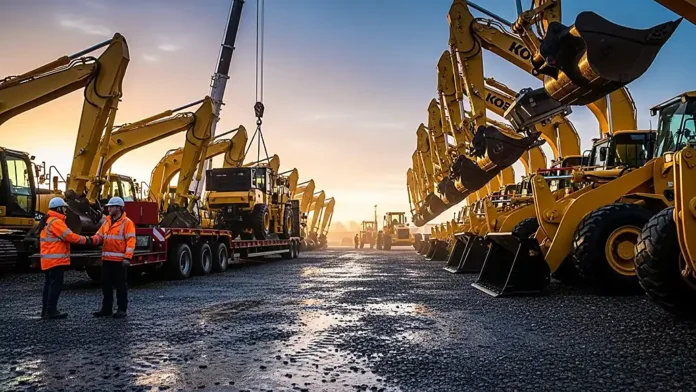As per the Equipment Leasing and Finance Foundation, there are 42% of businesses that plan to increase their equipment and software investments in 2025, with 32% citing rising labor costs and labor shortages as major reasons.
The Trump Administration’s One Big Beautiful Bill Act (OBBBA) for construction companies navigating these pressures can go on to bring significant tax relief to the construction companies who happen to be looking to modernize as well as grow their operations so as to meet the rising demand while at the same time operating with a smaller workforce. The new tax legislation goes on to offer businesses a greater level of certainty and also enhanced cash flow opportunities as compared to the provisions of the past under the Tax Cuts and Jobs Act (TCJA).
The OBBBA tax provisions happen to come at a very critical time for the sector. There are many construction firms that happen to be facing numerous financial pressures coming from tariffs and the growing cost of materials, besides the ongoing workforce challenges. As a matter of fact, 94% of the construction firms have reported difficulty filling the open positions in 2025, and the Associated Builders and Contractors have stated that the industry will be required to attract almost 439,000 new workers so as to keep pace with the demand.
It is well to be noted that while the TCJA was at the beginning created to enable the firms to navigate some of the economic strains, it also went on to create immense uncertainty, which greatly impacted the sector.
Apparently, the TCJA needed the businesses to capitalize on the domestic research and experimental expenses and also amortize them over five years, therefore creating the cash flow challenges for small as well as medium-sized businesses that depend quite heavily on research and development investments.
In spite of the strain caused by the R&E capitalization need, the TCJA did offer a major benefit to the construction firms by way of a 100% bonus depreciation in terms of qualifying equipment that’s placed in service between the period of September 27, 2017, and December 31, 2022. This helped the businesses to immediately deduct the total cost of eligible assets, therefore stimulating investment across equipment and infrastructure. But this provision began to phase out yearly by 20% starting in 2023, with a complete phase-out in 2027.
Importantly, the TCJA offered yet another avenue of tax relief through raising the maximum Section 179 deduction limit to $1 million, thereby enabling the profitable businesses to go ahead and expense a greater portion in terms of qualifying asset costs within the year of purchase. This deduction was phased out as and when the purchases of qualifying assets went beyond $2.5 million. This offered a great amount of financial relief for numerous construction firms; however, these benefits happened to be limited.
It is well to be noted that OBBBA has gone on to address much of the instability that has been brought on by the TCJA since it relates to the tax and investment planning. It also happens to give the firms greater confidence to go ahead and invest and grow as well as tackle the challenges in terms of the cost that the industry faces in today’s times.
Uncertainty when it comes to Tax Planning as well as Its Consequences
While the OBBBA has gone on to address much of the instability that has been caused by the TCJA, it is also quite significant to understand the challenges the firms faced under the previous tax provisions. The TCJA went on to slow down innovation for numerous companies while the industry happened to be navigating the digital transformation pressures.
By way of requiring companies to go ahead and capitalize as well as amortize R&E expenses for a span of five years, many activities got affected, right from software development to product testing. Companies went on to find themselves paying taxes on income that they had already reinvested in research, thereby creating a financial burden that discouraged the R&D tax relief.
Although the introduction of 100% bonus depreciation happened to be quite beneficial for many firms, the scheduled phase-out did create a lot of challenges. Firms had to precisely time large investments in order to maximize the tax benefits. It made it very complicated to go ahead and commit to multi-year capital roadmaps, therefore making the long-term investment decisions more complex.
While the Section 179 expenses did offer huge benefits, larger firms faced certain restrictions. Since the bigger equipment purchases did not get completely deducted, firms had to spread deductions out with time. This sort of constricted cash flow made it difficult to plan for larger equipment investments.
In totality, the tax benefits under the TCJA needed the companies to conduct extensive planning through weighing the timing as well as the scale of investments and also assessing the tax benefits against business along with the operational requirements.
The Transition to the One Big Beautiful Bill Act and Its Effect
Recognizing such sorts of challenges, the OBBBA offers more certainty along with tax relief for the U.S. construction and machinery firms. It goes on to extend the provisions of 100% bonus depreciation, raises the Section 179 expense limitations, and at the same time also reverses one of the most criticized elements when it comes to the TCJA through permanently restoring the immediate deductions as far as domestic R&E expenditures are concerned and also providing businesses with cash flow benefits that they require so as to fuel innovation as well as growth.
Through taking advantage of OBBBA, the U.S. construction and machinery firms can very much ease their tax burden and at the same time also free up the budgets to invest within the gamut of modern machinery and also advanced technology, which can go ahead and also create more efficient workflows, enable meeting the safety standards, scale certain new projects, and also stay competitive within the industry. Because of the clear guidelines on which assets happen to qualify for deductions, firms can very confidently strategize the investments that go on to align with their capital requirements.
Taking Utmost Advantage of the New Bill
In order to completely leverage such sorts of opportunities, the U.S. construction and machinery firms must make use of these major tax provisions in order to support the modernization of their operations:
- R&E Deductions: The OBBBA happens to introduce the IRC Section 174A, which goes on to permanently enable the businesses to slash the domestic R&E expenditures in the year they were incurred. Companies can go ahead and elect to capitalize as well as amortize domestic R&E expenditures for at least 60 months, starting when they first realize the advantages from the spending. As per the IRC Section 59(e), taxpayers can go ahead and elect to capitalize as well as recover domestic R&E expenditures for 10 years, offering more agility to the tax planning. The Act explicitly goes on to state that amounts that are paid for software development can be very well treated as R&E expenditures, eradicating any previous uncertainty within this critical area.
- 100% Bonus Depreciation: Reinstating and making 100% bonus depreciation permanent removes any kind of uncertainty that firms previously had. Firms can go on to receive immediate tax benefits through deducting the total cost of equipment in the year when it was placed in service. This happens to enhance the cash flow for companies and at the same time encourages investments in the new equipment or technology.
- Section 179 Limits: Such kinds of expense limits happen to be raised to $2.5 million with a $4 million phase-out. This can enable the firms to purchase as well as deduct larger equipment along with software, thereby further helping with innovation for the industry.
Financing Growth by Way of Tax Relief
Through taking the right advantage of such kinds of tax provisions, the U.S. construction and machinery firms can as well have an easier time financing their growth and at the same time modernizing their operations. R&E expensing in the past has had very little impact when it came to construction companies; however, in today’s times, design-build as well as the safety-focused contractors are making use of technology so as to streamline the processes and also meet some more safety standards. As a matter of fact, it is becoming more common forcontractors to develop their ERP and safety systems, for instance, all of which could very well qualify in terms of the R&D credit, therefore offering major tax relief.
The fact is that these tax provisions not only support the industry innovations, but they also go on to address a prominent challenge, which is a fast machine turnover. It is well to be noted that a typical life span when it comes to heavy equipment happens to be between 5 and 10 years, or 5,000–10,000 hours, taking into consideration proper upkeep.
But this lifespan is mostly shortened because of high maintenance costs. There are many heavy machines that go on to reach the end of their economically viable life much before their theoretical maximum life, contractors consistently delaying purchases or taking on the debt to replace worn-out machines. With the 100% bonus depreciation from OBBBA, firms can go ahead and write off equipment in a year without even hurting the cash flow, thereby enabling the contractors to update and maintain as well as expand their equipment.
Beyond the regular cash flow opportunities, the OBBBA also offers the certainty and also the agility that the industry requires so as to plan for the future. In times when the industry happens to be facing financial pressures as well as shortages of labor, these provisions happen to give the firms the opportunity to go ahead and enhance the efficiency with a workforce that’s thin, scale for growth, and of course, remain competitive. Going forward, firms that go on to take complete advantage of these benefits are going to emerge as industry leaders, thereby playing a major role in advancing the infrastructure of America for the times to come.































